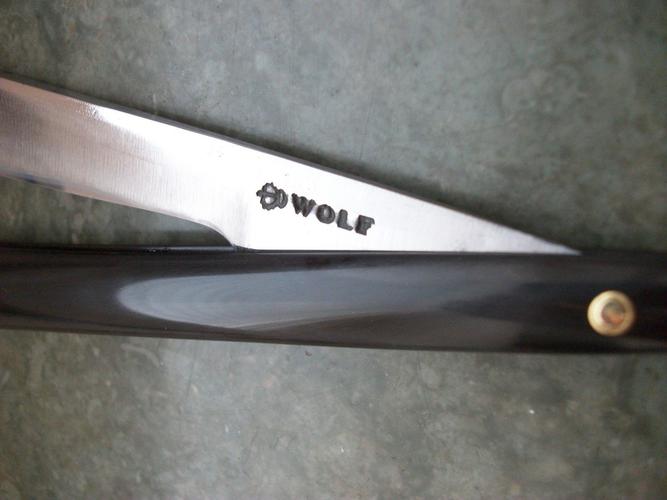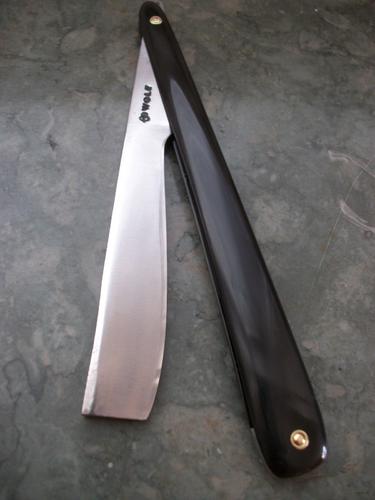Results 1 to 10 of 23
Threaded View
-
03-23-2015, 03:04 PM #1Senior Member

- Join Date
- Jan 2015
- Location
- Apex NC
- Posts
- 535
Thanked: 90 Crown wolf razor manufacturer question
Crown wolf razor manufacturer question

 I recently acquired this crown and wolf razor, but after looking up info on the manufacturer I am a bit confused. I thought it to be a John Shepherd 1770-1795, but now find Barber John & Son (old English, & successors to George Shepherd's mark, ' Wolf & crown' ) 12 Norfolk st. I also found a thread on here where an Allen and Son had the same mark, and it appeared
I recently acquired this crown and wolf razor, but after looking up info on the manufacturer I am a bit confused. I thought it to be a John Shepherd 1770-1795, but now find Barber John & Son (old English, & successors to George Shepherd's mark, ' Wolf & crown' ) 12 Norfolk st. I also found a thread on here where an Allen and Son had the same mark, and it appeared that The original firm of Allen & Son was founded in 1818 and based at Granville Works in Granville Street, Sheffield. They made small knives and used a sort of masonic trademark of compasses and steel square. Robert Allen died in 1898 after which (1902) the firm and its rights was acquired by Joseph Elliot. Joseph Elliot & Sons trademark was two reversed 'C's, one either side of a maltese cross, but they also bought the trademarks used by other companies such as Barber, Wigfall, Lockwood Bros, etc. One of those companies used two maltese crosses.
that The original firm of Allen & Son was founded in 1818 and based at Granville Works in Granville Street, Sheffield. They made small knives and used a sort of masonic trademark of compasses and steel square. Robert Allen died in 1898 after which (1902) the firm and its rights was acquired by Joseph Elliot. Joseph Elliot & Sons trademark was two reversed 'C's, one either side of a maltese cross, but they also bought the trademarks used by other companies such as Barber, Wigfall, Lockwood Bros, etc. One of those companies used two maltese crosses.
So if I am reading that correct Joseph Elliot & Sons bought the trademarks of Barber so an Allen and son razor had the crown and wolf mark on it, and Barber was the successor to George Shepherd?
I am guessing based on style this razor would be around 1775-1800.
Does anyone have better info on the Crown and Wolf? Is this a John Shepherd? Is there anymore info on John Shepherd, or George Shepherd? I can't find years for George Shepherd.
Just very interested the history of this. I shaved with it for the first time last night and it gave a really nice shave.
Also this is my first post so let me know if I did this correctly or not.
ThanksLast edited by rideon66; 03-23-2015 at 03:07 PM.
-
The Following User Says Thank You to rideon66 For This Useful Post:
Highwayman (01-20-2016)


 45Likes
45Likes LinkBack URL
LinkBack URL About LinkBacks
About LinkBacks






 Reply With Quote
Reply With Quote